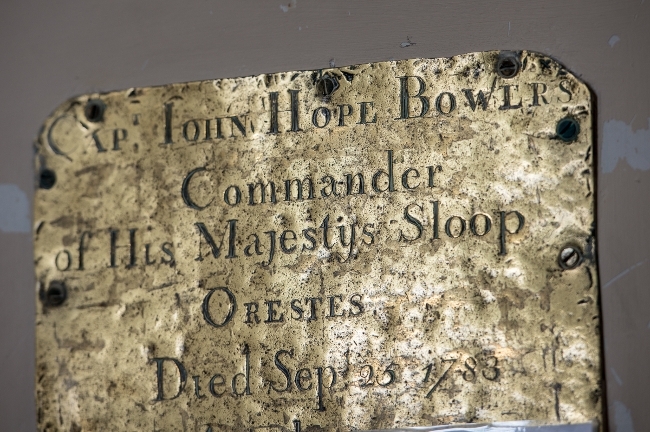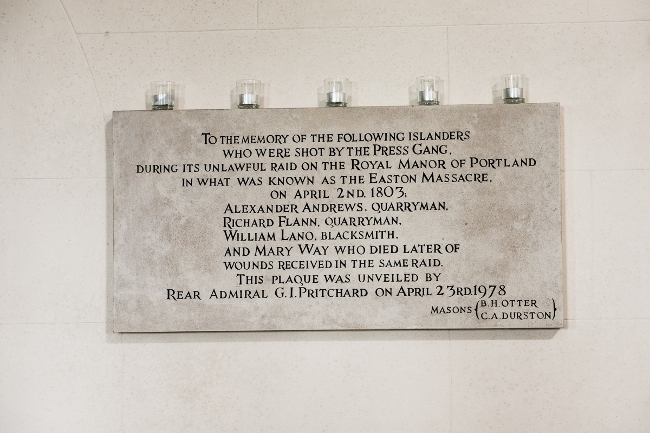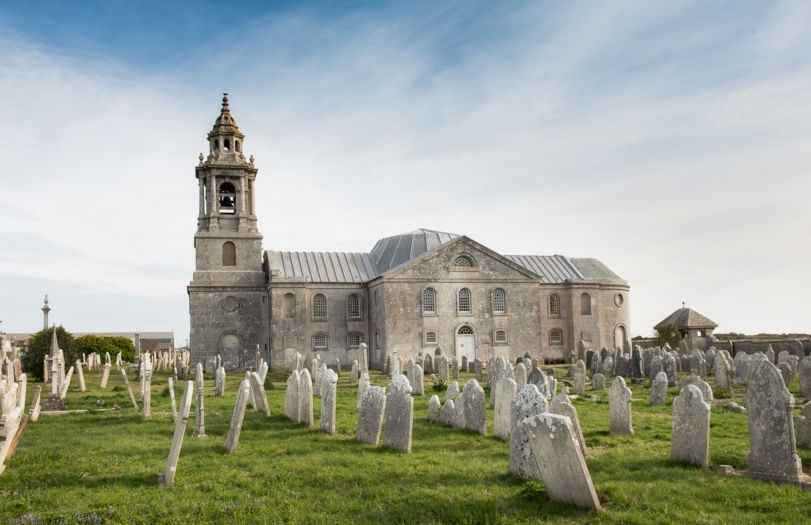Traces of Empire in Dorset
I had been teaching empires to an A Level Geography class in a module on ‘superpowers’ – more prosaically - geopolitics. I was surprised by their lack of knowledge of the British Empire, although in retrospect this is not surprising as only so much time is devoted to history at GCSE and A Level.
Following a visit to St George’s on Portland, where I had seen evidence of the flood and ebb of ‘empire,’ I decided to create a presentation to show just how pervasive the notion of empire was – not restricted to our grand cathedrals, but right down to small churches in places like Portland in Dorset.
The presentation uses the device of ‘flying’ in through a window and moving between artefacts in the church. (Though they are not necessarily in the locations in which they appear in the presentation.)

Orestes Plaque
The first thing that caught my eye in St George’s was the brass plaque to Capt. John Hope Bowers, Commander of the ‘Orestes.’ The Orestes had originally been a Dutch privateer called ‘Mars’. Stealing the Mars from the Dutch marked the decline of the Dutch Navy, especially after the Battle of Dogger Bank (1781). This battle prevented the Dutch navy supplying the United States, with whom Britain was at war. The Orestes was eventually lost at sea in the Indian Ocean in 1799 after many different Commanders.
Life at sea was hard, and there was no recruiting procedure like today - only the Press Gang. There is a commemorative stone to the memory of those who died in ‘The Easton Massacre’ - a failed press gang raid on the Isle of Portland. The clip from the film ‘Master and Commander’ shows something of the life on board ship; indeed, there is a commemorative plaque in St George’s marking the death of a local sailor off Zanzibar, aged 19. The Navy was key to the empire, guaranteeing safe seaways and projecting power to all four corners.

Easton Massacre
The map of British trade routes (1750-1800) shows just how globalised British trade had become by the end of the 18th century. This map was developed by plotting the locations from numerous ships’ logs.
The tribute to Capt. John Addison of the Bombay Army, shows that he lived to a good age, and the succeeding images show the different armies of the British East India Company, their areas of operation and the uniforms of the Bombay Army. As Britain lost its territories in north America (John Penn grandson of William Penn, founder of Pennsylvania, one of the original 13 states), attention turned to the east - India and Australia.
My view of empire is heavily influenced by John Darwin's writing. There was no intention to create an empire, no grand design. Establishing trade under the protection of a large navy was a major driver of empire, as was competition, but Britain lost and gained territories, though ultimately its reach exceeded its grasp, and it was unable to defend its global empire, being exposed by German and Japanese aggression in the Second World War.
~ Steven Richardson
See Steven's presentation here.

